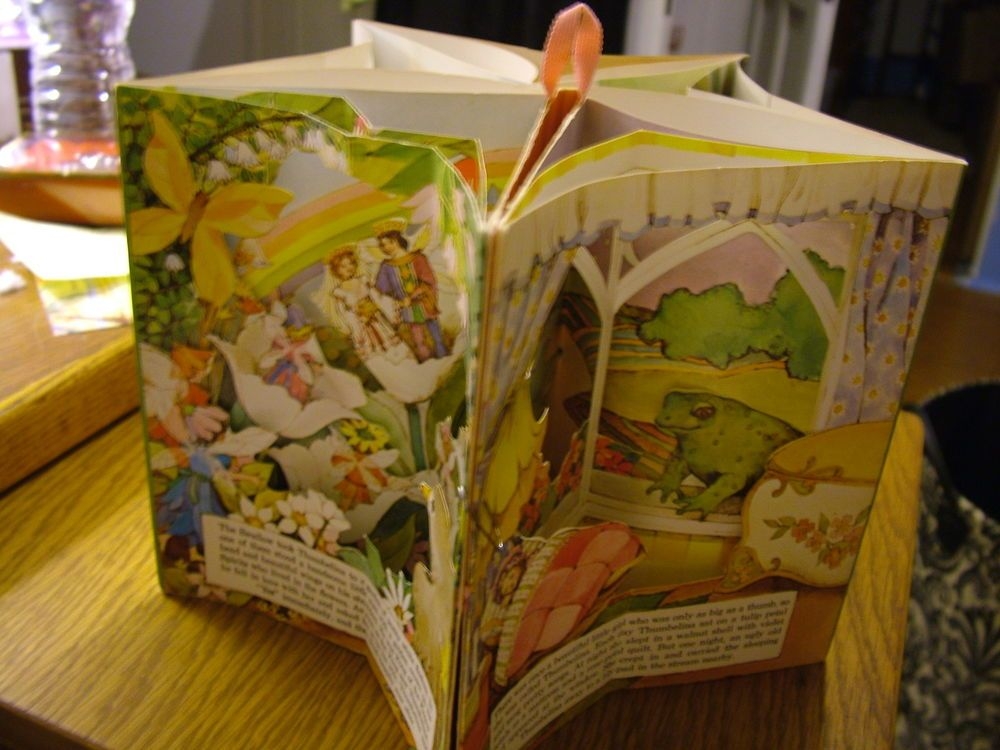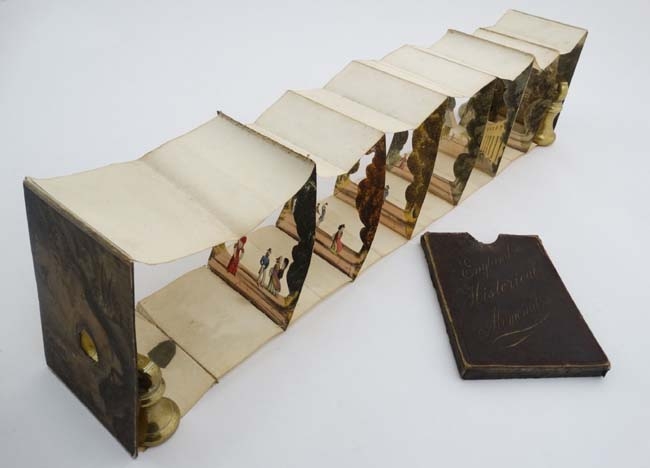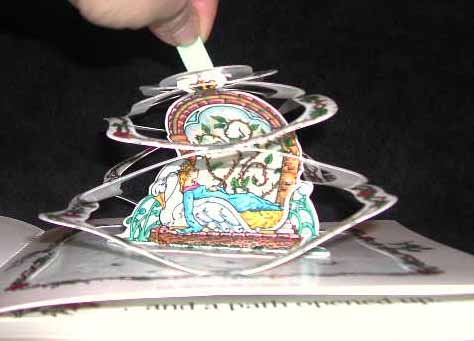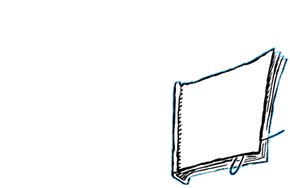GLOSSARY OF POP-UP TERMS
Definitions, terms, types of movables:It is only in the last 25 years or so that movable paper elements have been discussed and studied. Terms referring to these elements in books and ephemera have yet to be confined to a single definition.
CAROUSEL-Folding the covers back and tying them with string, ribbon, snap, or velcro, causes the pop-up or dioramic illustrations to form a carousel effect. Some have center strings for hanging or rods for twirling.

DIE-CUT-The process of cutting paper in a shape or design using a wooden block (die) which holds hand-pounded steel in the shape of the desired pattern. Think of a die as a cookie cutter cutting a shape in dough. More recently, paper may be cut into shapes with a laser.
DISSOLVING DISC-see METAMORPHOSIS definition #1
DOUBLE PAGE-POP-UP– A three-dimensional illustration which spans the gutter formed by two adjacent pages.
FANFOLDED POP-UP-Slits and folds are made on a printed page which is then folded accordion-style so that when the page is opened, the illustration will rise above the level of the page. A three-dimensional effect is achieved in this way.
FLAPS-One or more illustrated papers glued at one point. Lifting a flap exposes the illustration directly beneath it. (see Lift-the-flap)
GATEFOLD-Edge of a page folded back on itself which when unfolded extends the size of the page providing more text or extending an illustration or pop-up.
HARLEQUINADE (or TURN-UP)-Named after the popular Commedia dell’arte character, illustrations folded up or down over themselves changing the original illustration and moving the story along. (see HISTORY OF POP-UPS)

LIFT-THE-FLAP– A single piece of paper attached to the base page at a single point which covers an illustration, text, or a movable illustration. ‘Lifting the flap’ exposes the base page’s illustration, text, or movable.
METAMORPHOSIS (or TRANSFORMATION)- Convention uses these terms interchangeably for two different mechanisms.
1. Two circular illustrations sharing one center axis have pie-shaped cuts which will allow them to intersect when moved (usually by a string or tab) so that the top illustration will rotate over then under the bottom illustration allowing the bottom illustration to show through. The top illustration ‘metamorphoses’ or ‘transforms’ into the bottom illustration. (also called DISSOLVING WHEEL)
2. Two illustrations are slit like Venetian blinds vertically or horizontally. When pulled by a tab or ribbon, one illustration will slide over the other, ‘metamorphosing’ or ‘transforming’ into the other.
Something New For Little Folk #455, Ernest Nister, ~1899
PAPER ENGINEER-An artist who makes paper illustrations move through various techiniques, e.g. cutting, folding, glueing. The paper engineer may or may not also be the illustrator.
PEEP SHOW (or TUNNEL BOOK)-A series of illustrations die-cut to the shape of the illustration, spaced one behind the other, and supported by side panels. The front cover has one or more die-cut openings to allow viewing of the inside illustrations. The overlapping of the various illustrations creates a sense of depth, as in looking into a tunnel. Toy Theaters incorporated this technique.

POP-UP– An illustration which when activated by the opening of a page, pulling a tab, or lifting a flap rises above the level of the page. A three-dimensional illustration.
PULL-TABS (or TAB MECHANICAL)- Paper (or ribbon or string) extensions from an illustration which when pulled, pushed, or slid cause an illustration to move, lift up, or pop-up.
SPIDER WEB Within a circle, a spiral is cut either by hand or laser. A ribbon or pull is attached to the center area. When pulled up, a ‘spider web’ pop-up is created.

TRANSFORMATION (see METAMORPHOSIS)
TUNNEL BOOK (see PEEP SHOW)
TURN-UP (see HARLEQUINADE)
VOLVELLES-Circles (or die-cut pointers) of paper placed one on top of the other which rotate around a central axis and are secured by a central string or rivet. In the case of discs, often there are die-cut holes to allow the information on the base page to show through.

WHEEL-An illustrated disc of paper secured between two adjoining pages by a paper disc or metal grommet. Die-cut holes in the top page allows for the illustrations drawn around the wheel to show through the holes.

